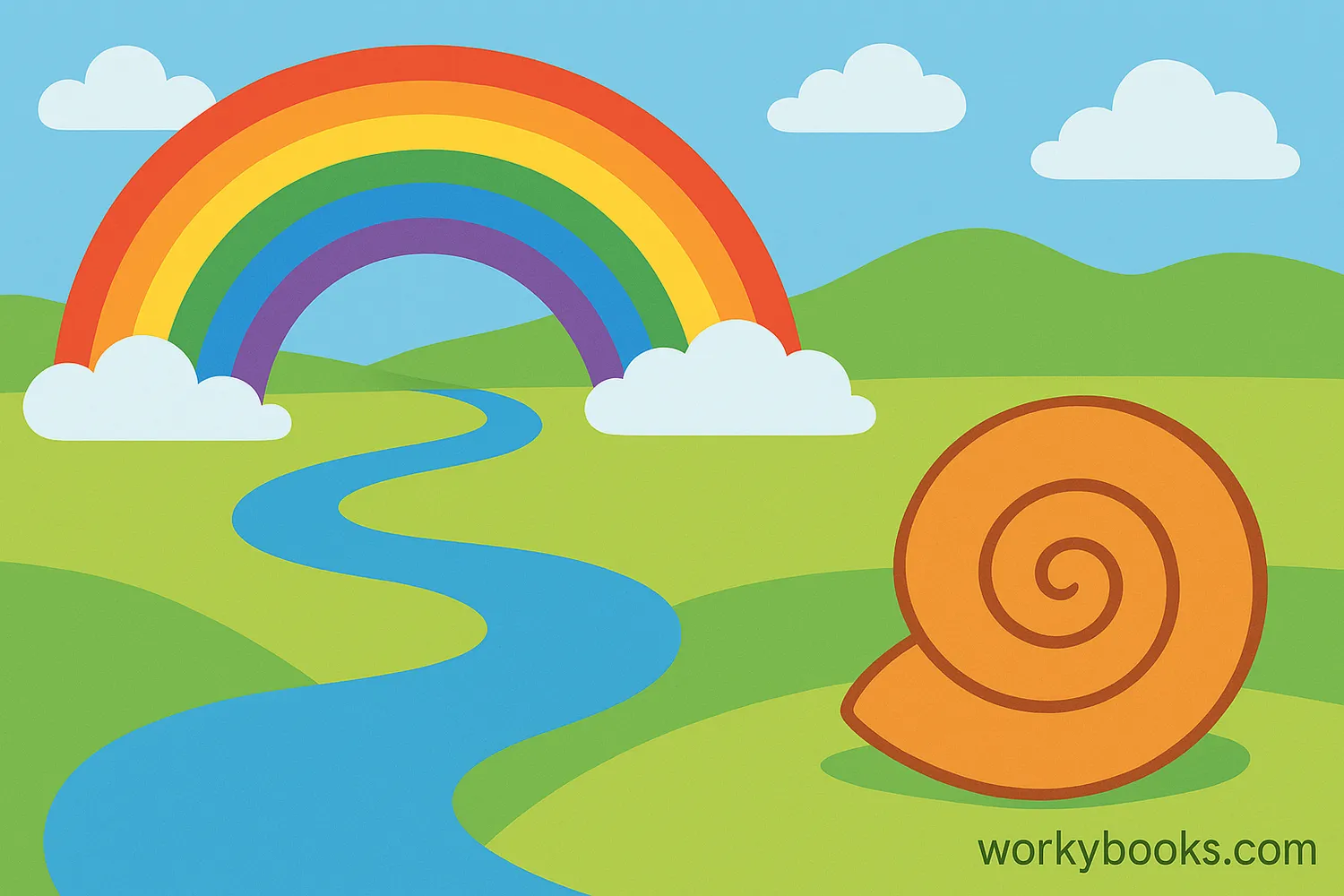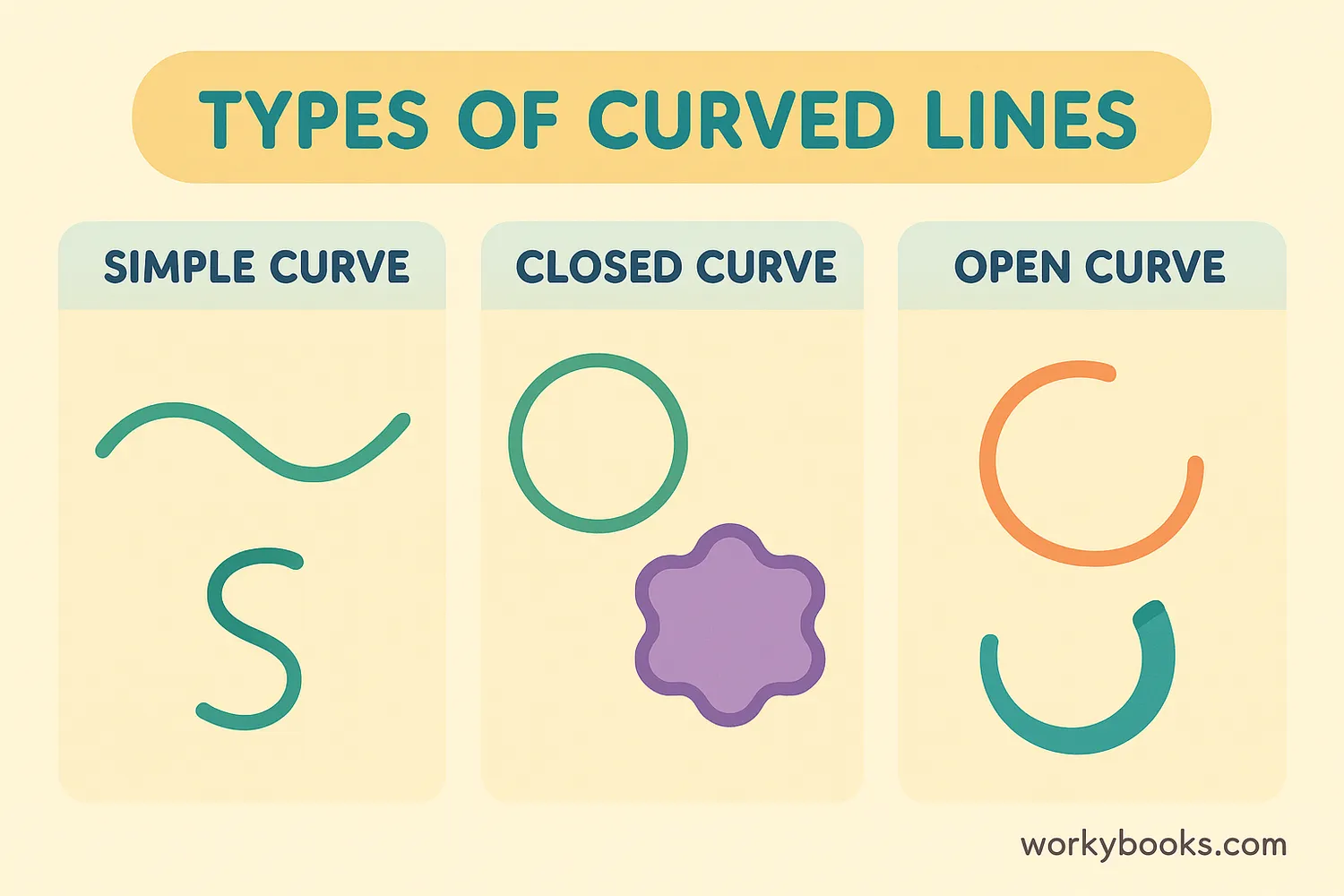Curved Lines - Definition, Examples, Quiz, FAQ, Trivia
Learn about curved lines with easy explanations, visual examples, and practice activities
What is a Curved Line?

A curved line is a line that is not straight. It bends and changes direction smoothly without any sharp corners. Unlike straight lines that go in one fixed direction, curved lines can bend in many ways to form beautiful shapes.
Curved lines are all around us! You can find them in rainbows, the wheels of your bicycle, and even in the shape of a smile. They help create interesting shapes and patterns in art and nature.
When we draw curved lines, they flow smoothly without any sudden changes. This makes them different from straight lines that go directly from one point to another without bending.
Key Concept
Curved lines bend smoothly and change direction gradually, without any sharp angles or corners.
Types of Curved Lines

Curved lines come in different forms. Let's explore the main types:
Simple Curve
A curve that doesn't cross itself. It bends smoothly in one direction like a wave or a hill.
Closed Curve
A curve that forms a complete shape with no endpoints. Circles and ovals are closed curves.
Open Curve
A curve that has two distinct endpoints. A rainbow or a crescent moon are open curves.
Remember
Closed curves form complete shapes, while open curves have distinct starting and ending points.
Curved Lines vs. Straight Lines
Curved lines and straight lines are both important in geometry, but they have different characteristics:
| Feature | Straight Line | Curved Line |
|---|---|---|
| Shape | Doesn't bend | Bends smoothly |
| Direction | One fixed direction | Changes direction |
| Corners | No corners (unless broken) | No sharp corners |
| Examples | Ruler edge, building corner | Rainbow, circle, roller coaster |
| Length | Shortest distance between points | Longer distance between points |
Interesting Fact
A straight line is actually a special type of curve with zero curvature!
Real-World Examples

Curved lines are everywhere in our world! Here are some examples you might recognize:
Nature: Rainbows, rivers, hills, flower petals, and shells all have beautiful curved lines.
Everyday objects: Balls, plates, wheels, bananas, and roller coasters all use curved lines in their shapes.
Art and design: Artists use curved lines to create beautiful patterns, letters (like S and C), and decorations.
Architecture: Many buildings have curved elements like arches, domes, and circular windows.
Next time you're outside, look around and see how many curved lines you can find!
Discovery Tip
Look at your own body - your smile, your ears, and your fingerprints all contain curved lines!
Curved Lines Quiz
Test your knowledge with this 5-question quiz. Choose the correct answer for each question.
Frequently Asked Questions
Here are answers to common questions about curved lines:
Curved Lines Trivia
Discover interesting facts about curved lines:
Nature's Favorite
Curved lines are nature's favorite design! From the spiral of a seashell to the orbit of planets, nature uses curves more often than straight lines. This is because curves distribute stress evenly and are structurally strong.
Engineering Marvels
Architects and engineers use curved lines in bridges and domes because they can support more weight than straight lines. The curved shape distributes weight efficiently, allowing for stronger structures.
Artistic Expression
Famous artists like Vincent van Gogh used curved lines to create movement and emotion in their paintings. His "Starry Night" is famous for its swirling, curved patterns in the sky.
Cosmic Curves
In space, planets move in curved paths called orbits. Even light travels in curves when it passes near massive objects like stars, a phenomenon called gravitational lensing.





